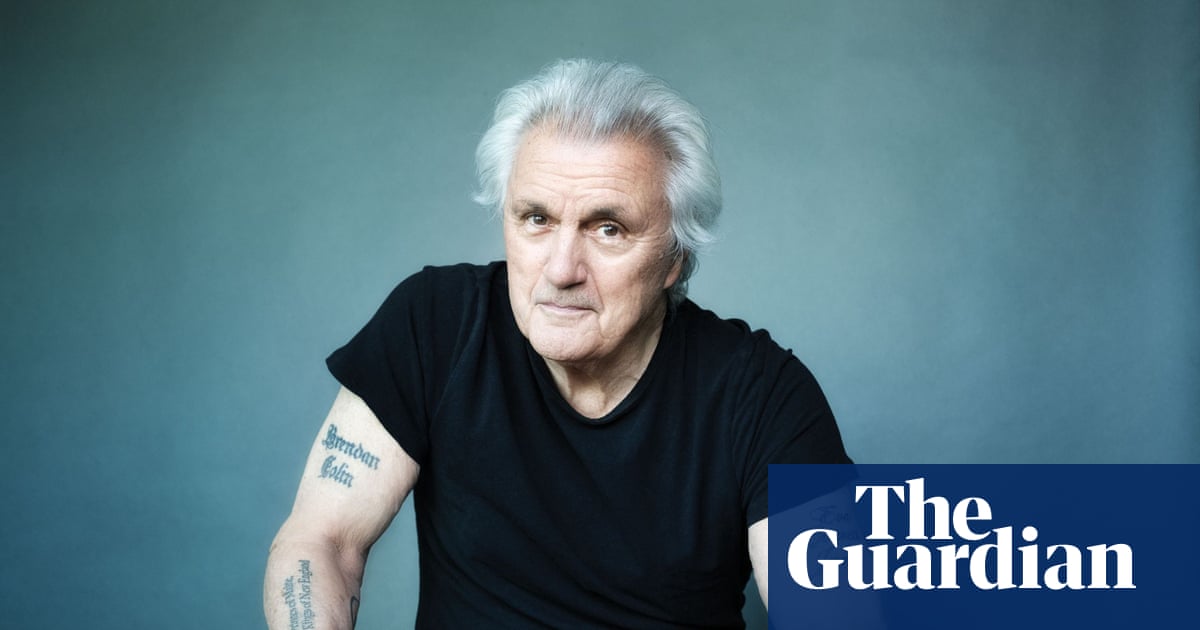If some writers have an imperial phase, where they hit the heights time after time, then American novelist John Irving’s ran through a series of four fat, satisfying novels, from his 1978 breakthrough The World According to Garp to 1989’s A Prayer for Owen Meany. Those were generous, funny, big-hearted books, tying characters he calls “outliers” to social issues from feminism to abortion.
Since Owen Meany, it’s been diminishing returns, except in page length. His last novel, 2022’s The Last Chairlift, was 900 pages of subjects Irving had explored better in earlier books (mutism, dwarfism, transgenderism), with a 200-page screenplay in the middle to pad it out – as if padding were needed.
So we approach a new Irving with caution but still a small flame of hope, which burns hotter when we learn that Queen Esther – a mere 432 pages – “returns to the world of The Cider House Rules”. That 1985 novel is one of Irving’s very best, set largely in an orphanage in St Cloud’s, Maine, run by Dr Wilbur Larch and his protege Homer Wells.
In The Cider House Rules, Irving wrote about abortion and belonging with colour, comedy and an all-encompassing empathy. And it was a significant work because it left behind the topics that were becoming tiresome tics in his books: wrestling, bears, Vienna, prostitution.
Queen Esther opens in the fictional town of Penacook, New Hampshire in the early 20th century, where Thomas and Constance Winslow adopt 14-year-old orphan Esther from St Cloud’s. We are a few decades before the action of The Cider House Rules, yet Wilbur Larch remains recognisable: already addicted to ether, adored by his nurses, starting every speech with “Here in St Cloud’s …” But his appearance in Queen Esther is limited to these early scenes.
The Winslows worry about raising Esther well: she’s Jewish, and “how could they help a young Jewish girl find herself?” To answer that, we flash forward to Esther’s adulthood in the 1920s. She will be part of the Jewish emigration to Palestine, where she will become part of Haganah, the Zionist paramilitary organisation whose “purpose was to protect Jewish settlements from Arab attacks” and which would later form the core of the Israeli Defense Forces.
These are huge subjects to tackle, but having introduced them, Irving dodges out. Because if it’s disappointing that Queen Esther is not really about St Cloud’s and Dr Larch, it’s even more disappointing that it’s also not about Esther. For reasons that must relate to plot engineering, Esther becomes a surrogate mother for another of the Winslows’ daughters, and gives birth to a baby boy, Jimmy, in 1941 – and the bulk of this novel is Jimmy’s story.
And here is where Irving’s obsessions come roaring back, both regular and specific. Jimmy moves to – where else? – Vienna; there’s discussion of dodging the Vietnam draft through self-mutilation (A Prayer for Owen Meany); a dog with a symbolic name (Hard Rain, meet Sorrow from The Hotel New Hampshire); as well as wrestling, prostitutes, writers and penises (Irvings passim).
Jimmy is a less interesting character than Esther promised to be, and the secondary players, such as students Claude and Jolanda, and Jimmy’s tutor Annelies Eissler, are flat too. There are some nice set pieces – Jimmy losing his virginity; a fight where a couple of thugs get battered with a crutch and a bicycle pump – but they’re here and gone.
Irving has never been a subtle writer, but that is not the problem. He has always reiterated his points, foreshadowed plot developments and allowed them to accumulate in the reader’s mind before bringing them to fruition in long, shocking, amusing scenes. For example, in Irving’s novels, body parts tend to go missing: think of the tongue in Garp, the finger in Owen Meany. Those absences echo through the story. In Queen Esther, a major character loses an arm – but we only find out 30 pages before the end.
Esther returns late in the novel, but only with a last-minute sense of wrapping things up. We never do find out the full story of her life in Palestine and Israel. Queen Esther is a disappointment from a writer who once gave such joy. That’s the bad news. The good news is that The Cider House Rules – I reread it alongside this novel – still stands up beautifully, 40 years on. So read that instead: it’s twice as long as Queen Esther, but 12 times as good.
